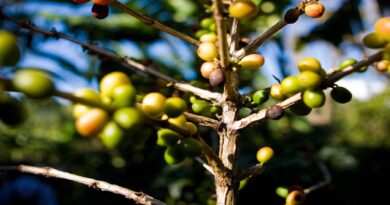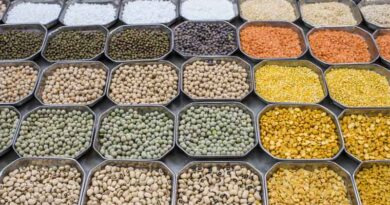Vietnam’s agricultural market outlook
04 November 2022, Vietnam: On November 4, the Institute of Policy and Strategy for Agriculture and Rural Development (IPSARD) – Ministry of Agriculture and Rural Development (MARD) coordinated with the Department of Agricultural Product Processing and Market Development to organize a Workshop on Evaluation of Outlook for market of agricultural products in Vietnam. The event was organized with the support of the Australian Program to Support Vietnam’s Economic Reform (Aus4Reform).
Dr. Tran Cong Thang said: Vietnam is one of the countries with a large export turnover of agricultural products in the world, mainly rice, coffee, seafood, pepper, cashew nuts, rubber… in which the United States, China, Korea, Japan are the major export markets today. However, Vietnam is facing amany big challenges in production ralated to epidemics and unpredictable political factors. Although per capita consumption of agricultural products has increased, there are still many difficulties in market access, and the impacts of climate change are becoming more and more obvious. Therefore, information about weather warnings, import and export policies and market information is extremely important. As the advisory body of MARD, IPSARD has implemented and connected with many domestic and foreign agencies to research and devise market strategies.
The current situation shows that Vietnam’s agricultural product exports are facing many difficulties from 2020 when the COVID-19 pandemic broke out around the world, having a significant impact on the economy of agricultural products in particular and the global economy. demand in general. Although agriculture is one of the key industries and has a high level of resilience compared to other industries, supply disruptions cause prolonged difficulties and greatly affect production, trade and consumption patterns. consumption, changing consumer behavior and trends, leading to a change in the shape of supply chains.
According to statistics until September 2022, the growth rate of agricultural exports of most countries increased. In which, the EU market increased by 24%, Japan increased by 29%, ASEAN increased by 30% compared to the first nine months of 2021. Despite two years affected by the epidemic, the growth of some key commodity groups was maintained. maintain stability such as wood and forest products, aquatic products, cashew nuts, rubber, rice, cassava… Particularly in the group of aquatic products in 2022, exports are expected to exceed 10 billion USD.
In the opinion of Mr. John Baffes – senior agriculture expert of the World Bank, the statistics and the current market situation show that slowdown in global growth causes pressures goods. However, in many countries commodity prices in local currency still increase due to currency depreciation. It is forecasted that in 2023, the growth of the energy industry will decrease by about 11% and decrease by 12% in 2024, leading to a decrease in the prices of agricultural products and metals from 5% to 15% in 2023, gradually stabilizing in 2024.
Mr. Mattew Miller – an expert from the Australian Agricultural and Resource Economic Scientific Research Agency shared that the current global climate change issue has had a direct impact on agricultural production and commodity trade both in national and international countries of the world. Vietnam is a country with a strong agricultural source, accounting for 1/5 of GDP, so climate change is also a factor that clearly affects farming and farmers’ irrigation water, which can reduce from zero to zero. .7% – 2.4% of total GDP in 2025. In which, the rice industry is the most affected, however, the forecast of the impact of temperature and rainfall at the provincial level ranges from a slight decrease. , even had a positive effect on a reduction greater than 30%.
The workshop received many opinions to assess and solve the difficult situation in agricultural production today. According to common opinion, with the context that the world has just experienced a long period of the COVID-19 epidemic along with the Russia-Ukraine war, the world has faced many obstacles. However, difficulties also open up great opportunities for countries, including Vietnam, if they promptly change and adapt with appropriate strategies and policies. With Vietnam, despite facing many challenges due to large import markets such as the United States, the EU always has higher regulations on food safety standards, quality and strict control processes…then also opens up great opportunities for agricultural products, especially fruits and aquatic products.
Accordingly, in the context that the world energy price is forecasted to remain at a high level, it may increase the prices of commodities, especially food, leading to challenges for ensuring food security and reducing the surplus value. With a surplus of agricultural products, Vietnam needs to focus on solutions to both ensure food security and increase exports of agricultural products.
At the end of the workshop, Dr. Cao Duc Phat said that leading domestic and international senior agricultural experts have given a panorama picture of the world’s agricultural product market in the short, medium and long term. term. In the context of supply and demand fluctuations related to the impact of the COVID-19 pandemic, inflation and the Russian-Ukrainian war on the world market, through analysis, Vietnam’s agricultural industry has clear directions, for both domestic and import-export markets, especially to help Vietnam see its strengths to exploit and expand better. to ensure the development of agriculture sustainably and with higher efficiency both domestically and internationally./.
Also Read: Agriculture and the agricultural economy is the strength of India: Union Agriculture Minister
(For Latest Agriculture News & Updates, follow Krishak Jagat on Google News)















